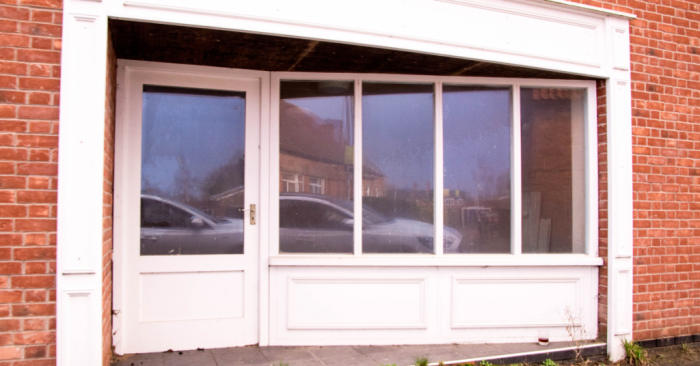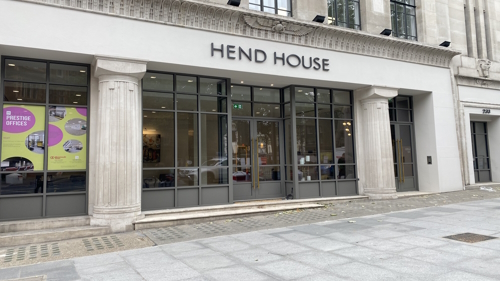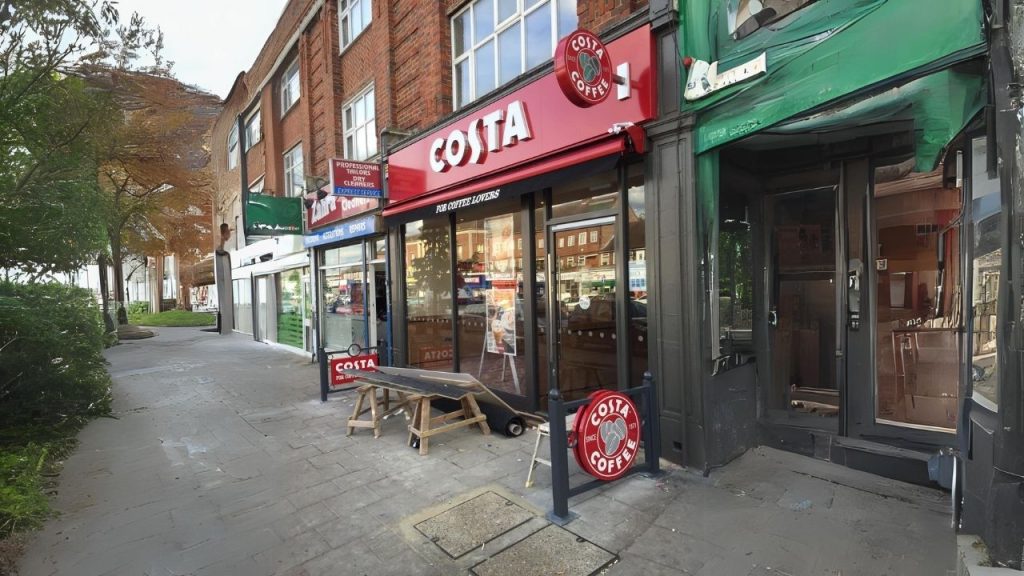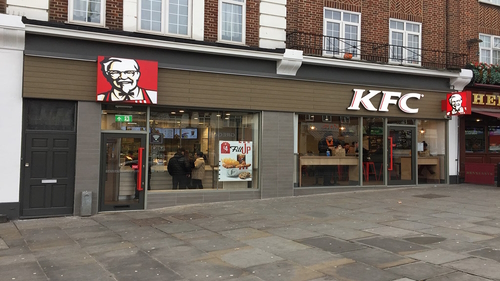31 Mar 13 Easy Tips for Shop Front Design
Want to know how to create a shop front design that makes you stand out on the high street?
Your shop front is one of the most important aspects of your business. It is the first thing customers see, and it can strongly influence their decision to come inside. That’s why, in this blog, we’ve decided to cover some top tips to help you design a shop front in style. Read on for some inspiration!
Contents

Tips on How to Design a Shop Front
Want to know how to design a shop front effectively? Here are our top tips:
1. Respect the character of the building and neighbouring properties
When designing your shop front, it is important to respect the character of the building. You’ll want to create a design that complements the building and its surroundings.
We advise avoiding anything that clashes or overpowers the original character of the building and always being mindful of the scale of your shop in relation to the other buildings around it.
A shop front should not be designed in a way that makes it difficult to identify the business it belongs to. Therefore, you should also want to avoid creating a design that is too similar to your neighbours’ fronts, as this can create confusion for customers.
2. Consider the local character of the area
When designing your shop front, it is important to consider the local character of the area. While not copying your neighbours’ designs, you should aim to create a design that aligns with the neighbourhood’s style and is welcomed by the community.
Many local councils have guidelines around the styles of shop fronts that can be used in certain areas to ensure that visitors have a positive and consistent experience when walking around different shopping and neighbourhood districts.
Tip: You may also want to consider the demographics of the area and what type of shop would be most appealing to the local population.

3. Conserve historic or existing features
When designing your shop front, it is important to consider the historic or existing features of the building. You’ll want to create a shop front design that complements these features without overshadowing them.
You may also want to consider retaining some of the original features of the building, such as the facade or the windows. Conservation areas require a heritage or traditional approach to shop front design, ensuring that original features are preserved or replicated.
Fortunately, working with experienced shop designers and builders will ensure your shop front adheres to local government guidelines and legislation regarding improvements.
4. Have a clear shop identity
When designing your shop front, it is important to create a clear shop identity. This means having a design that is unique and easily recognisable to your brand. What’s more, you should ensure that customers can identify your shop from a distance and that your shop front design clearly indicates the type of business you offer.
This can be achieved by incorporating your logo and business name in your signage alongside your brand colours and the architectural features of your shop’s structural design.
5. Choose your colours wisely
When choosing for your shop front, it is important to consider the type of business you have and how your shop front is going to reflect your overall brand.
You want to choose colours that will attract customers and make them feel comfortable. For example, bright and bold colours may work well for a shop that sells clothes or cosmetics, but they may not be as effective for a shop that sells furniture or appliances. It is essential to consider the target market and the type of impression you want to convey to them.

6. Use symmetry and rhythm, considering the upper floors
When designing your shop front, it is important to consider how it will look from the upper floors. It is best to create a design that is balanced and aesthetically appealing. With this in mind, you may want to use symmetry and rhythm to achieve visual harmony.
You will also want to ensure that the shop front is in proportion with the building and that it does not appear disjointed from the rest of the building.
7. Ensure the entrance is clearly defined
One of the most important aspects to consider when designing your shop front is the entrance – it should be clearly defined and easy to find.
You should also ensure that the entrance is inviting so customers feel comfortable coming in. For example, you may want to use a welcoming colour, such as yellow, or display a sign that says “Welcome” to make customers feel wanted.
8. Make sure it is easy to navigate
Another important aspect to consider when designing your commercial shop front is the layout. Your customers need to be able to navigate it and find what they are looking for.
For example, you may want to use a simple layout with clear signage and a logical flow. This will always make your customers more likely to return.
9. Integrate signage and lighting into the overall design concept
If you have the budget for it, your signage is another important aspect of your shop front. It is the first thing customers see, and it can either entice them to come inside or deter them from entering. The signage should fit with your brand’s overall identity.
When it comes to signage and lighting, it is important to integrate them into the overall design concept. This will ensure that they look cohesive and professional. You may want to use the same type of materials and finishes for both elements to create a unified look, as well as ensure that the signage and lighting are in proportion to the shop front.

10. Incorporate security features
Remember to always put safety first. Our shop front design specialists can integrate security measures into the project, including smart locks, cameras, motion sensors, roller shutters, and toughened glass.
We can seamlessly integrate each security feature you desire into the shop front design without compromising on style. This means you never have to sacrifice one crucial aspect of your shop front design for another!
11. Create inviting window displays
Fantastic window displays don’t have to break the bank – they just need a sprinkling of creativity. Remember to focus on telling a clear, visual story that keeps your brand on point and underscores your best products or key themes.
Additionally, you can utilise strong focus points, eye-level arrangements, and good lighting to draw in foot traffic.
12. Use high-quality materials
When designing your shop front, it is essential to use high-quality materials. This will ensure that the shop front is both durable and professional-looking.
Using a material like aluminium or toughened glass will give you a contemporary and modern aesthetic while ensuring your shop front is durable and weather-resistant. On the other hand, using timber requires a specialised treatment process to ensure it lasts for many years and may help draw in eco-conscious consumers.
If you are working with a limited budget, it is important to focus on the essentials. This means that you may have to forgo some of the more expensive elements of shop front design, such as signage and lighting. Instead, focus on creating a visually appealing shop front using simpler materials and finishes.
Read our guide on reasons to choose an aluminium shop front for more helpful information.
13. Work with an experienced shop front designer
Details like your shop front’s joints and architectural finishes can make or break your project, and if you work with an inexperienced shop fitter, these details can be the difference between replacing your shop front in five years or 25 years.
All joints need to be properly sealed and finished, and your shop front requires the correct finishes to be applied to the materials, preventing corrosion, decay, or damage in the future. London Shop Fronts can help you with this.
Talk to Us about Shop Front Design Ideas
Your commercial shop front design can make or break your business…
The design and layout of the shop may determine whether customers come in to browse, buy something they need on a whim, or leave without buying anything at all. If you want to increase sales from the shop front design, it is essential to consider how the customer will experience their time in your shop.
These modern shop front design ideas will help you create the perfect commercial shop front that attracts customers and encourages them to come inside. If you need any help or support with designing, building, and installing your shop front, London Shop Fronts has been providing expert, end-to-end support in this industry for decades.
Get in touch with us today for a free consultation on designing your shop front.
Shop Front Design FAQs
Below, we’ve tackled some of our customers’ most frequently asked questions regarding commercial shop front design. If you have a question about shop front designs which isn’t addressed, please don’t hesitate to contact us!
How do you design the front of a shop?
When designing a shop front, start by considering your brand’s identity and target audience to mock up a visually appealing layout. Don’t forget to consider our top shop front design ideas above to hit the nail on the head, or ask our design specialists for expert advice.
How do you make a shop front stand out?
Using colours that pop and bold signage are some ways you can help your shop front design stand out. You can also incorporate unique branding elements, creative window displays, and effective lighting to capture your target audience’s attention.
What is the best colour to paint a shop front?
There’s no singular best colour to paint a shop front – the right fit will really depend on your brand and location. Despite this, bold, contrasting colours often work well together, while brighter reds and yellows are particularly effective at drawing people’s eyes.
What are the elements of a shop front?
There are multiple elements to consider when designing a shop front, including signage, display windows, doors, lighting, colour scheme, and accessibility features. Consider your audience’s needs when incorporating these elements.
Do you need planning permission to change a shop front?
In some cases, you may need planning permission to make significant changes to your shop front, so ensure you check with your local authority before commencing work.


Sorry, the comment form is closed at this time.